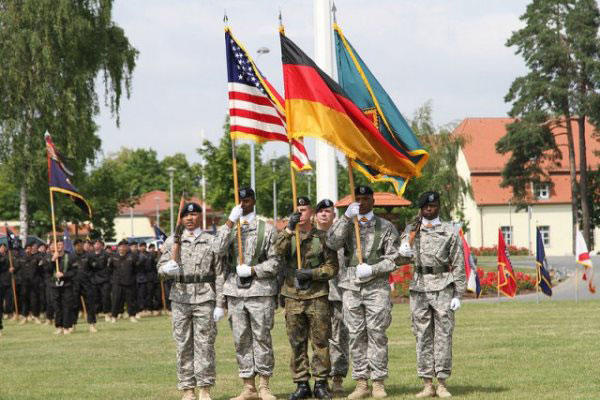NATO militaries must share intelligence on the Islamic State in Iraq and Syria (ISIS) to prevent "lone wolf" attacks against U.S. troops in Europe, the No. 2 U.S. Army commander in Europe said Thursday.
"We understand there is the possibility of lone-wolf attacks" against U.S. troops in Europe by ISIS terrorists returning from Syria and Iraq, said Maj. Gen. Walter Piatt, deputy commander of U.S. Army Europe (USAEUR).
The threat put a premium on the sharing of intelligence among alliance members to track terrorists, Piatt said. For the past year, "we've been trying to energize intelligence sharing to make sure things are shared, especially with local law enforcement" in member states. "That is one of the biggest challenges," Piatt said at a Defense Writers Group breakfast in Washington D.C.
U.S. troops "are a target. We know they're a target" for ISIS terrorists and sympathizers, Piatt said. The task was to ensure that the troops "don't present an easy target to a lone wolf or an opportunist," Piatt said.
Another priority for the Army in Europe was improving the ability of NATO militaries to exchange information, Piatt said. "The interoperability challenge we have is with communications," Piatt said.
"There are 13 different systems across the alliance and none of them can talk to each other. We don't have that solved yet. That's a big one to go after," Piatt said. He said the Army was looking at different ways to connect the various systems until NATO can devise a common system for NATO's 28 member states.
The intelligence and communications initiatives were part of a shift in focus for the mission of the Army in Europe and NATO from supporting the wars in Iraq and Afghanistan to guarding against Russian aggression in Europe and shoring up the defenses of the Baltic states and Poland, Piatt said.
The shift entailed moving from meeting the operational demands of the Iraq and Afghanistan wars to focusing on "operational preparedness" in Europe by increasing joint exercises and training through rotational deployments of troops to Eastern Europe, Piatt said.
The point of the effort was to demonstrate to allies that "we mean what we say" on the U.S. commitment to Article 5 of the NATO treaty on mutual defense, Piatt said.
Piatt credited President Obama with helping to re-assure allies on the U.S. commitment with his speech in Estonia last month in which he addressed the people of the Baltic states directly: "You lost your independence once before (to Russia). With NATO, you will never lose it again," Obama said.
Piatt also noted that Obama in June asked Congress for $1 billion for a European Re-Assurance Initiative to fund increased exercises, training and the rotational presence of U.S. troops in Europe.
The Army in Europe will have to meet those commitments with far fewer troops than the 280,000 that were in Europe at the height of the Cold War. Piatt said that USAEUR currently had about 31,000 troops and the projection was for that number to go down to about 28,000.
However, the situation on the ground was far different than it was during the Cold War, Piatt said.
"I think we have this right," he said. "We can create a smart defense if we do this correctly."
The footprint of USAEUR was expected to get even smaller next year, when major garrisons in Heidelberg, Mannheim, Bamberg, and Schweinfurt in German are expected to close their gates.
The Army plan was to consolidate at Stuttgart, Wiesbaden, Kaiserslautern, Baumholder, Ansbach and Grafenwoehr in Germany; at Vicenza in Italy; and at NATO support sites in Belgium, the Netherlands and Luxembourg.
-- Richard Sisk can be reached at richard.sisk@monster.com





























